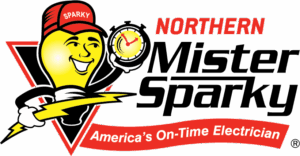For many homeowners in the Twin Cities area, the thought of relying on a heat pump to survive a Minnesota winter might seem counterintuitive. The image of a heat pump struggling against sub-zero temperatures is a long-standing one, but advancements in technology have made this a misconception of the past. Northern One Hour Heating & Air Conditioning is here to show you how a modern heat pump is not only a viable heating option for your home, but also a perfect fit for a climate with dramatic seasonal shifts.
The evolution of heat pump technology: From mild climates to Minnesota winters
Heat pumps work by extracting heat from the outside air and bringing it inside. For decades, heat pumps were primarily recommended for regions with milder winters. Older models lacked the ability to efficiently heat homes once outside temperatures dipped below freezing. However, the heating and cooling industry has undergone significant upgrades, introducing cold-climate heat pumps that are specifically engineered to perform in frigid conditions.
These newer systems utilize groundbreaking technologies that set them apart. One key innovation is the use of variable-speed compressors. Unlike a traditional furnace that’s either all on or all off, a variable-speed system is like a car with a gas pedal. It can adjust its speed to give you just the right amount of heating or cooling. This allows it to work more efficiently all the time, especially during a cold Minnesota winter when it needs to maintain a high level of performance.
Another crucial advancement is enhanced vapor injection (EVI) technology. Think of this as a special boost for the heat pump. This technology helps the system pull more warmth out of the extremely cold outdoor air, even when it’s well below freezing. It’s the main reason a modern heat pump can keep your home toasty warm even on the coldest Minnesota days, often without needing a supplemental furnace to kick in. This new way of working makes the heat pump much more efficient, allowing it to produce more heat for the electricity it uses.
How heat pumps deliver year-round comfort and efficiency
Heat pumps move heat, rather than generating it. This gives them a head start in staying energy efficient. Consider a traditional gas or electric furnace. These generate heat by burning fuel or using electric resistance, which is an energy-intensive process. A heat pump, on the other hand, operates like a two-way air conditioner. In the winter, it absorbs the heat energy that exists naturally in the outdoor air (yes, even cold air has heat energy) and transfers it into your home. In the summer, it reverses this process, pulling warm air out of your home and expelling it outside.
This dual-functionality means you get both a heating and cooling system in one energy-efficient package. For homeowners, this can translate to significant savings on utility bills. By eliminating the need for separate heating and cooling units, a single heat pump system can reduce your overall energy consumption year-round. It’s a single, streamlined solution for maintaining a comfortable indoor environment regardless of the season.
Beyond efficiency: The many benefits of a modern heat pump
Beyond the incredible energy savings, a modern heat pump system offers a host of other benefits that improve your home’s comfort and your peace of mind.
Improved air quality and comfort: Because a heat pump moves and conditions air, it can provide a more even, consistent temperature throughout your home than a traditional furnace. The lack of combustion also means no burning of fossil fuels inside your home, which can reduce airborne irritants and provide a cleaner, healthier indoor environment.
A quieter home: Modern heat pumps, especially those with variable-speed technology, operate at a much quieter level than furnaces or central air conditioners. This provides a more peaceful indoor environment, free from the loud “on” and “off” cycles of older systems.
A greener choice: A heat pump’s reliance on electricity rather than natural gas or oil makes it a significantly more environmentally friendly heating and cooling option. By electrifying your home’s HVAC system, you’re reducing your carbon footprint and contributing to a cleaner future.
Who doesn’t want a heat pump?
While modern heat pumps are an excellent solution for many homes, they aren’t the perfect fit for everyone. The initial upfront cost of a new heat pump system can be higher than a traditional gas furnace, which might be a deciding factor for some homeowners, even with available rebates and long-term savings. Additionally, some people simply prefer the sensation of hot air that a gas furnace provides, as heat pumps tend to deliver warmth at a lower, more consistent temperature.
Some homeowners may worry about how their heat pump is going to handle the extreme, multi-day cold snaps we tend to get in the winter. We often recommend dual-fuel system integration, which combines a heat pump with an existing or new high-efficiency gas furnace. This solution is often the best of both worlds for homeowners who are seeking energy efficiency and guaranteed warmth.
Is a heat pump right for you? The team at Northern One Hour can provide a detailed assessment and help you navigate the options, ensuring you get a modern, efficient, and reliable system that is perfectly suited for the Minnesota climate. With the right technology and professional installation, you can stay warm all winter and cool all summer, all while saving money and energy. Set up an appointment now. Call Northern One Hour Heating & Air Conditioning at (763) 319-0872 or schedule your appointment online by hitting the “schedule now” button at https://www.northernonehour.com/.


